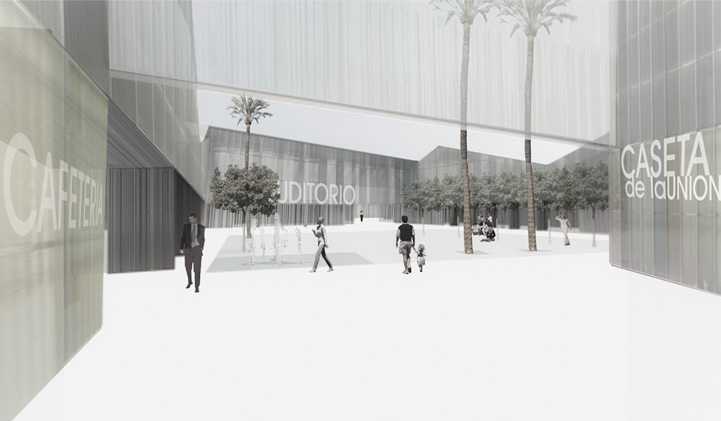
EXPO EDUARDO ADARO BANCO DE ESPAÑA
TECHNICAL DATA
ARCHITECTS AUTHORS:
MEDIOMUNDO ARQUITECTOS, M.Pelegrín+ F.Pérez;
PROJECT: Spatial design of Exhibition, supports and Graphic Design “Eduardo de Adaro The architecture of the Bank of Spain. A world in transformation” .
PROGRAMME: Design of Spaces and Devices for the exhibition.
VENUE: Bank of Spain. Chaflan de Cibeles Hall. Madrid.
DATE: 2023-2024
Surface area: 350m2
Promoter: Banco de España.
Designing an exhibition on the architecture of an architect inside one of his buildings is like trapping a message “inside a bottle”. Even more so if, as MEDIOMUNDO architects, we were commissioned two years earlier to reform, restore and adapt the Chaflán de Cibeles, originally the main entrance, as an exhibition hall, reconditioning the space to the spatial demands and conservation requirements of the exquisite Banco de España Collection.
Project and building exhibit in themselves the capacity to adapt, to be completed, to be continued, an indisputable quality and efficiency always necessary in an institution such as a bank. The exhibition on the architecture of Eduardo de Adaro argues that it brings together in this monumental work, innovation and tradition in force not only in Spain but also in Europe at the turn of the century from the 19th to the 20th. Consequently, the documentation that illustrates it and which is on display brings together original plans of the project, construction documentation, industrial innovations of the time (unique lifts, electrical systems), the production of plaster, metal, glass and wood craftsmen, but also the contemporary reading of photographers (Candida Hoffer, Laguillo, Campano, Maqueira) who portray the spatial richness and profusion of details of the architecture of the Banco de España.
The exhibition design, as was done in the restoration of the space, gives centre stage to the pieces on display and displays, in the manner of an inventory, the materials that certify the architect’s commitment to modernity, visible in the space and documentation of numerous projects, bank headquarters and residential buildings. MEDIOMUNDO architects also designed for this exhibition, in addition to display cases and supports for the works, the “BANCO BANCO” seat, a welded aluminium piece for the quiet contemplation of the works.


























































